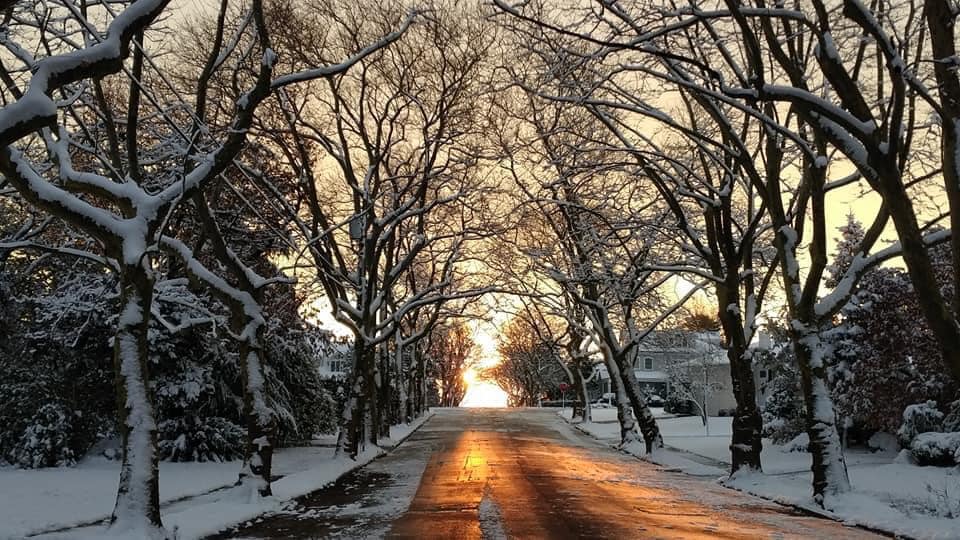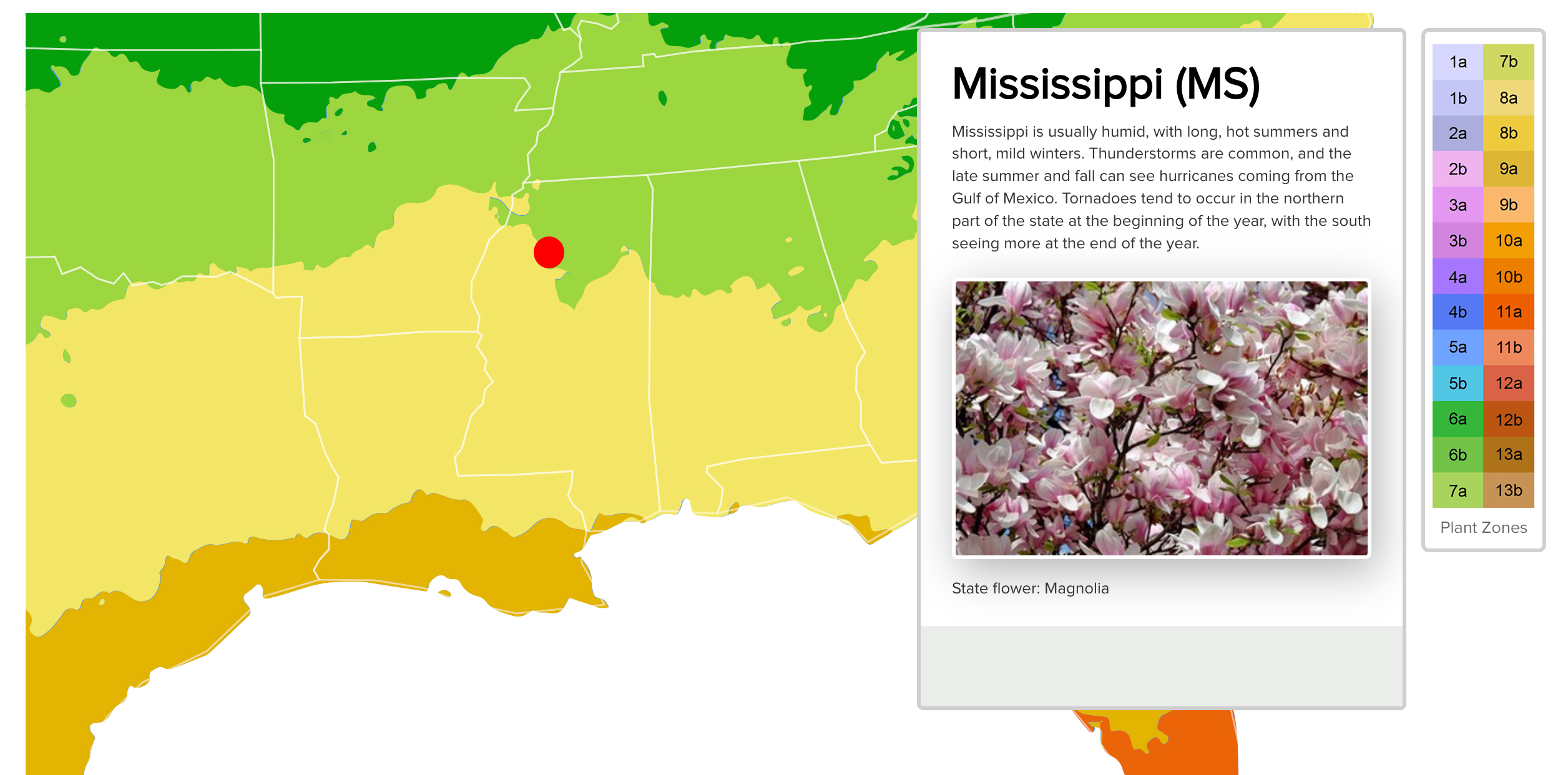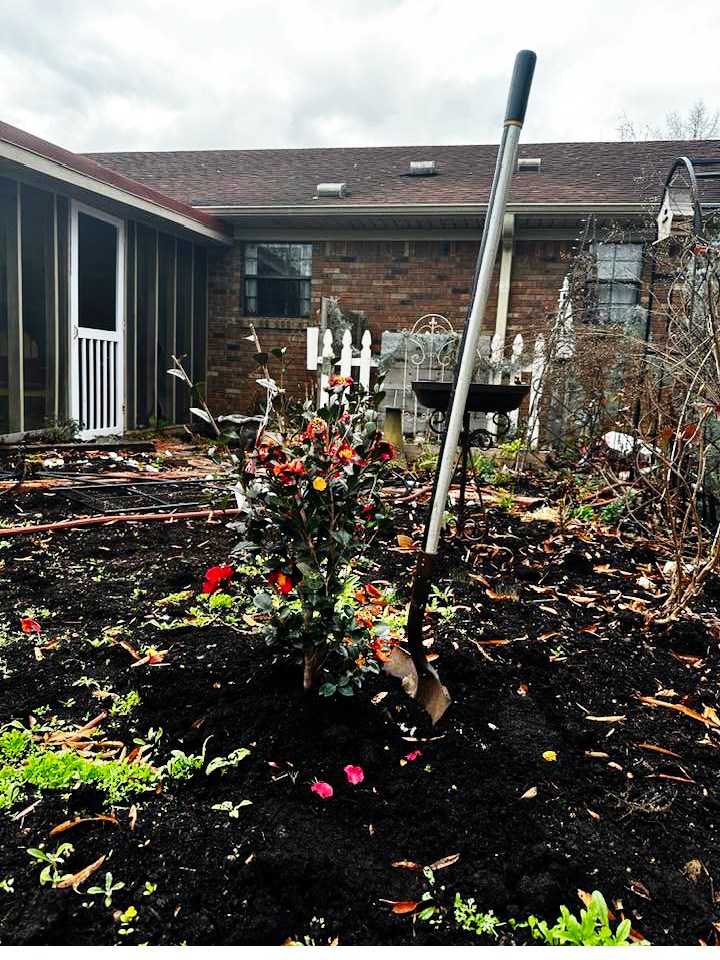
Six years ago, I was living in New Jersey, and if you asked me what to do in my winter garden there, I’d say: “Nothing.” Gardening was not a January thing to do in New Jersey, but in Mississippi, the issue is a bit more complex. In fact, until today, I have worked in my garden every day, and today is January 12.

But Old Man Winter Is Almost Here!
While I am sleeping tonight, the temperature will drop down to 23, and that is just the beginning of the temperature’s downward spiral. During next week, the temperature will drop down to 4 degrees one night, and it will not get much warmer for several days before or after that day.
In Gardening, Four Degrees Speak Volumes.

Image Credit: Gilmour

Planting Zones in Mississippi
Image Credit: Gilmour
I currently live and garden in Water Valley, MS, which is an area that straddles gardening zones 7a and 7b. At least, that is what the books say. A more accurate summation is that during parts of the winter, I live in conditions that compare to that in Zone 5, and during the summer, the weather here is more like Zone 10. The biggest threat to Mississippi gardeners is the vast and sudden fluctuation of the weather between those extremes.
The fabulous Mississippi horticulturalist Felder Rushing explains the situation:
“It’s gonna be rough next week for most of the state. while extreme weather is normal for mid winter in mississippi, SUDDEN deep freezes often catch plants off guard – it takes a couple of weeks of gradual chilling for plants to build up “antifreeze” in their tissue, but it can be lost within a few days of mild sunny weather. on top of that, many borderline garden plants including some shrubs and “winter” veggies (other than just a handful like kale and onions) are NOT cold PROOF – those plants grow naturally in COOL climates all summer in places like europe, pacific northwest, mountainous areas of warmer climates – and are NOT super tolerant of hard freezes – when it gets really hot or super cold they can be distressed or even killed. protect them if it gets to the lower 20s or certainly in the teens.” John [Felder] Rushing – Facebook Post

Tip Number 1: Don’t Do What I Did in My Winter Garden
I’ll quote some great Mississippi gardeners to offer a more sane way to approach gardening during the coldest time of the year.
Tips to Prepare for a Winter Freeze:
-
water plants ahead of time (wet soil is less prone to freeze super hard, and actually radiates warmth as the water turns to ice).
-
set outdoor potted plants (patio containers, new trees or shrubs needing to be planted, etc.) on the ground, or in an unheated garage or tool shed, or at least up against a building with pots covered with mulch to insulate roots.
-
any plants brought indoors should be put clustered away from heater vents, and set back out as soon as it warms back up to above freezing, or they will be damaged by warming up too much.
-
on covering: if you think you MUST cover some borderline plants, pots, or beds, think twice about whether it normally would be okay… i see a lot of folks covering up plants that will do just fine uncovered.
-
if you cover plants, use impermeable plastic which retains heat, not porous burlap or cloth (i know a lot of you do that, and it does cut off cold wind and a bit of frost, and up north can prevent sunscald, but down here the TRUTH is that porous materials help very little if temps get down below the mid 20s. really).
-
cover plants COMPLETELY, all the way to the ground to capture rising warmth from the soil. if possible drape over posts to keep leaves from touching the cold plastic. use boards or bricks to hold it down on the ground.” John [Felder] Rushing – Facebook Post
Discover more from Jacki Kellum
Subscribe to get the latest posts sent to your email.